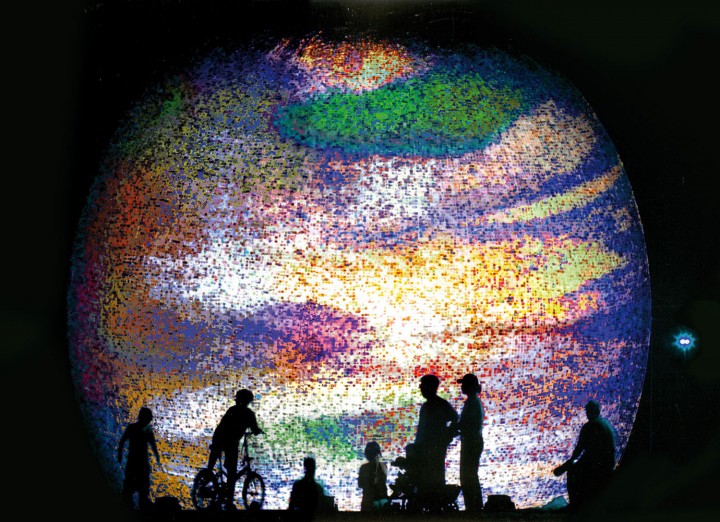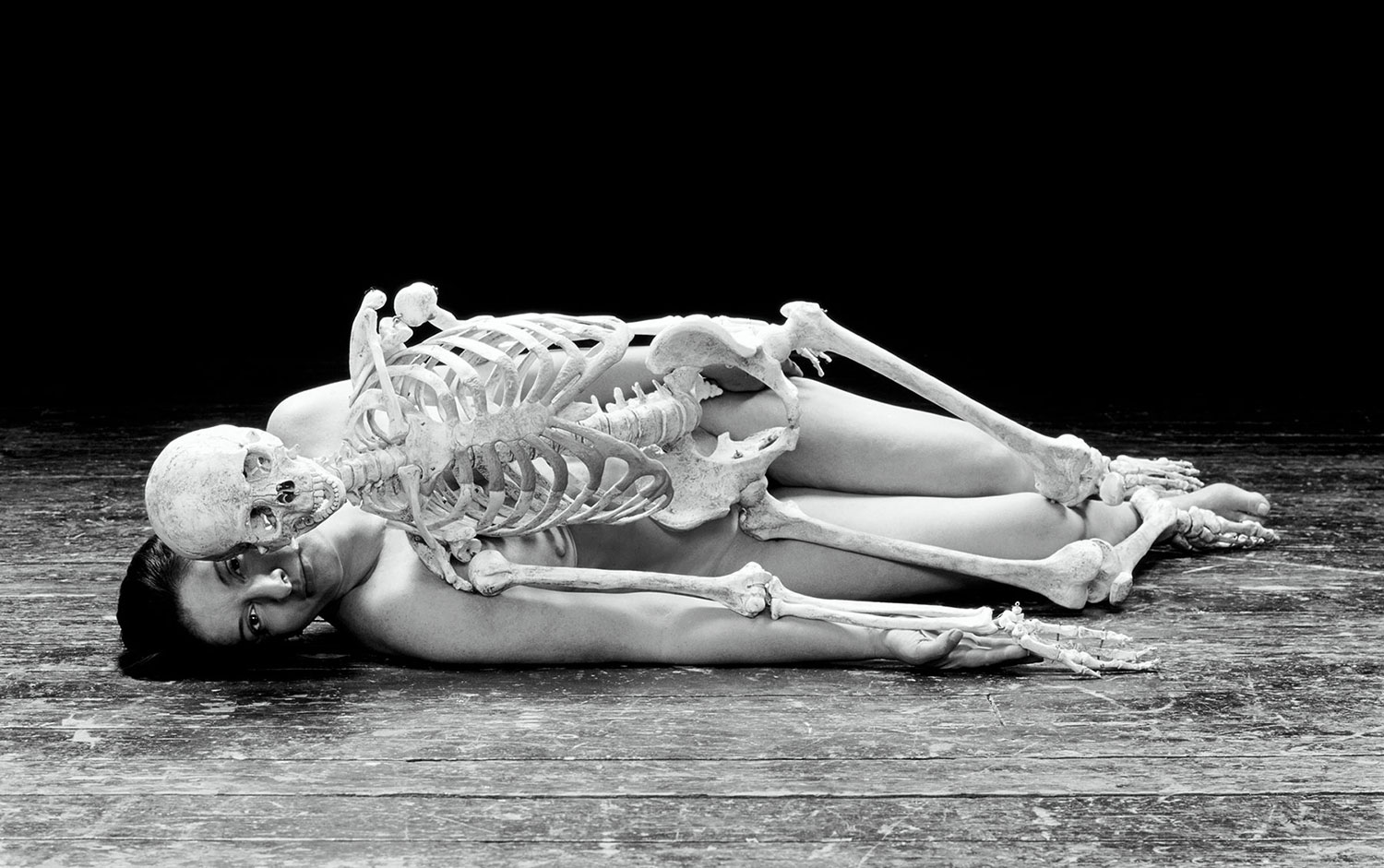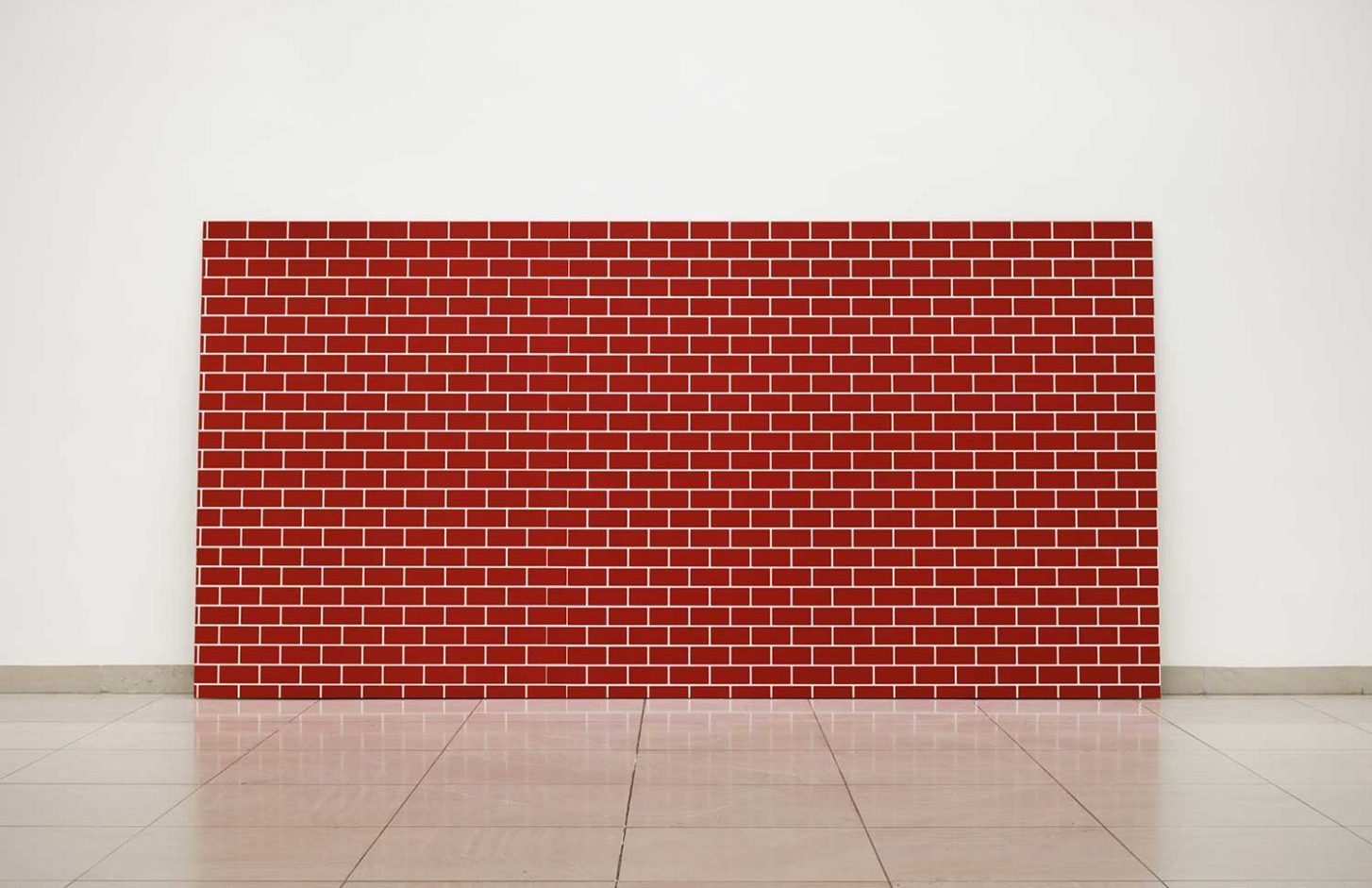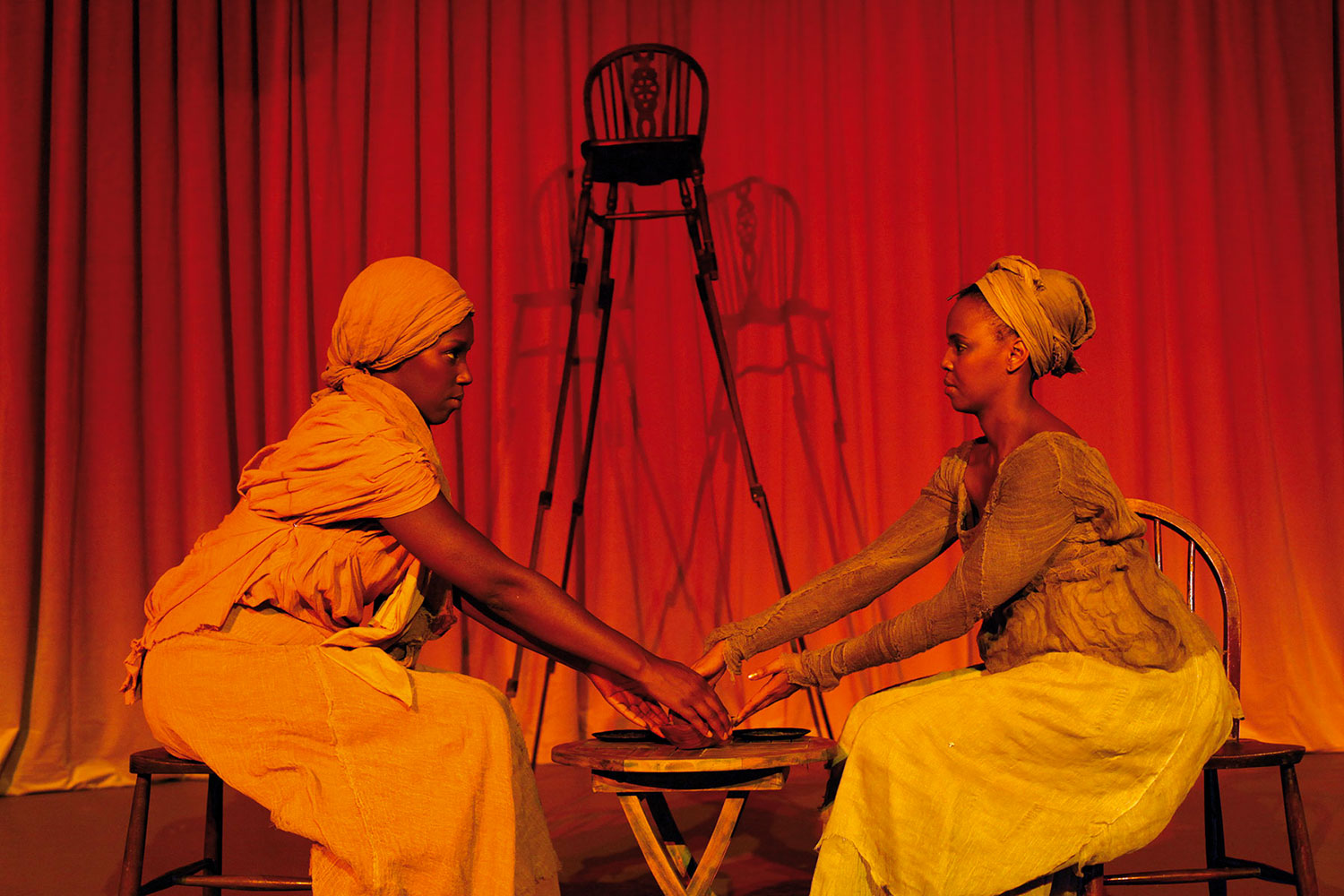
Nicola Trezzi: You moved to New York in 1984, but when we went to Korea together I had the sense that you go back often and you are very attached to the community. How did your work develop since you moved to the US?
Ik-Joong Kang: Upon my arrival in New York, I enrolled at Pratt Institute in Brooklyn. There, I developed the three-by-three-inch format during my days as a student. It was developed primarily outside the classroom, in response to my practical necessity at the time. I was an impoverished student, working 12 hours a day at a Korean grocery store in Manhattan and also as a watchman at a flea market in Far Rockaway, Queens. Looking for ways to effectively utilize time spent on the long subway rides, I discovered that three-inch-square canvases fit easily into my pockets and into the palm of my hand. My lengthy commute became transformed into work time in a mobile studio. These miniature canvases functioned like pages in a diary upon which I recorded my immediate responses to life in a foreign city. I thought it would be cool to show these thousands of “three-by-three moments” of my life as a single installation someday. Three years ago, 62,000 works of art were shown at the National Museum of Contemporary Art in Korea under the title Multiple Dialogue Infinity (2004). My artwork surrounded a gigantic tower consisting of 1,003 television monitors created by Nam June Paik. As for my trips to Korea, I’ve just earned 1,000,000 airline miles, which gives me a right to eat a free meal at the business-class lounge at Incheon Airport in Seoul. I guess that’s a sure sign that I fly a lot — especially to Korea.
NT: The moon jar* is the subject of many of your works. When did you start working with this iconic object and why have you decided to use it so often?
I-JK: They say that the best things in life come unexpectedly, and the first moon jar painting was born unexpectedly. In 2004 I did a project called Moon of the Dream, a 15-meter-diameter globe balloon with 126,000 children’s drawings attached that was launched at this lake not far from the DMZ, the demilitarized border zone between North and South Korea. On the morning of the opening day I was shocked to see a somewhat deflated and unbalanced giant globe floating on the water. Accidentally we pumped too much air into the globe thinking we could get a perfectly round shape. But in doing so, the vinyl/canvas material got ripped at one corner and the full-moon shape slowly became a deflated half moon. There was despair at first, but soon I saw a lovely shape in the deflated globe: a moon jar! Moon jar painting was born then. By the way, the globe was fixed just in time for the big opening. Nam June Paik once said that the moon was the earliest TV. It was the place of imagination and a playground. The Chinese poet Li Bai drowned when, sitting drunk in a boat, he tried to seize the moon’s reflection in the water. The moon was the place of immortality and a connecting station to another world. The moon jar is the place where people store their dreams.
NT: You use the jar as both a sculptural readymade and as a subject for depiction. Your work 1,392 Moon Jars (Wind) (2008-10), which is part of the Guggenheim collection, consists of 1,392 glazed porcelain jars painted with enamel. What is the significance of this number?
I-JK: 1392 is the first year of the Joseon Dynasty, out of which developed haff — the Korean alphabet — and the moon jar. Both inventions hold two important facts: yin and yang. With a combination of vowels and consonants, each Hanguel makes a single sound, just as the attachment of top and bottom forms a whole moon jar.

NT: When we were in Korea together you had more than five projects around Seoul and an exhibition in Daegu. How do you approach the presentation of your work compared to your studio practice? Do you let the curator decide everything or do you like to be involved?
I-JK: It’s like a marriage between the curator and the artist. Good matchmaking is what makes a good show. I’m the kind of artist who can be extremely flexible in the process of installation as it relates to the actual space and presentation.
NT: Do you think your practice will become more and more monumental? Or will you keep things scaled down?
I-JK: It will grow bigger as children are growing taller. In this last one year alone, aside from my own exhibitions of my work, I had 12 different murals of children’s drawings installed at 12 hospitals and libraries in Iraq, Afghanistan, Jordan and South Korea. Over 1,000 volunteers made these projects possible. Amazingly, these volunteers include prisoners, nursing home residents, soldiers and students of all ages.
NT: We went to a children’s museum in Korea where you had a big installation made in collaboration with kids. Tell me about these projects — why and when did you start working with children?
I-JK: I started collecting drawings by children from 1997, a year before my son was born. As a child growing up in South Korea, I often heard stories from my elders about their lives in a Korea that was one single country. I remember how their eyes filled with the hope of once again embracing their long-lost family and friends. I thought building an actual bridge between the two Koreas with children’s drawings would be one way to unite the country. So I started sending letters to South Korean children first, saying: “I would like to gather your dreams and show them in one place so everyone can see! What is your dream? Do you dream from the mountains? Maybe you dream from your home near the ocean, or city with tall buildings.” 100,000 Dreams (1999), my first project with children, was with 60,000 small children’s drawings of South Korea. It was installed inside a one-kilometer greenhouse in the wasteland of the South Korean demilitarized zone in 1999. Though North Korean children did not participate as planned, this project grew into Amazed World (2005) and Moon of Dream (2004). At night, the gigantic tube lit up like a fat glowworm, hoping to attract North Korean children on the other side to come out and play.
NT: Will you ever go back permanently to Korea? The art scene is experiencing a boom. What do you think of this renaissance?
I-JK: I am not so sure whether I will go back to Korea permanently. Although Korea is my home, I recently purchased a cemetery lot here in New York overlooking the Atlantic Ocean. If I keep going east from the cemetery, I will land in Europe, China and eventually Korea. Anytime is the best time to visit the cemetery and lie down and see the skies and feel the winds. All is connected. Yes, Korea is a booming country. Its renaissance is due to the energetic young people who live there. Oh, and one more thing: compared to any other cities I’ve traveled, Seoul is chaotic enough to be creative and breathable. We call this Kimchi power!

NT: What is the last dream you remember?
I-JK: I would become a bridge builder. The bridge will be laid over the Imjin River, which has been separating North and South Korea for more than a half century. In my dream, children’s dreams fill the bridge and anyone who walks on this bridge will be sent to the future without even having to buy a ticket. This is the bridge of past, present and future.
NT: Tell me about your friendship with Nam June Paik and Hyang An Kim.
I-JK: One of the luckiest things that happened to me in New York was meeting these two great Koreans — Nam June Paik and Hyang An Kim. They gave me great inspiration. I’ve always believed that life is like riding a train. We get on and get off. The person sitting next to you keeps changing as time goes by because everyone has different tickets with different destinations. I met them in the train and they sat next to me for a short period of their train ride. Eighteen years ago I was preparing a two-person exhibition with Nam June Paik at the Whitney Museum of American Art in Connecticut. From his residence in Düsseldorf, Nam June faxed a simple, two-sentence-long message, which read: “I am very flexible. It is very important that Ik-Joong has the better space.” One time Nam June and I were dining with people working in finance, they were all amused at his insightful interpretation of minute-by-minute changes in Wall Street. Then they were all astonished as he asked, “What would the 30th-century world be like?” and smiled like a child. His pure smile is still vivid in me. I thought to myself, “I am pretty sure he is a shaman who sees stars even in daylight.” Years ago, Nam June was quoted in a Korean newspaper: “Uncertainty can exist without creativity. However, creativity cannot exist without uncertainty. We have not led the exhibition to serve cuisine to youth. We are presenting this tough show to give them [young Korean artists] strong teeth to break down any food.” Hyang An Kim was the wife of Whanki Kim, a pioneer and leading abstract artist in Korea. Their life together started in the early ’60s after Whanki Kim’s participation in the Bienal de São Paulo. One morning Madame Kim and I were sitting at a small coffee shop in Paris. She told me a story I will never forget: “Kang, there are three things you must remember in your life. First, never skip a breakfast. When your body doesn’t function well due to the lack of nutrition, you tend to use the shortcut and then you fall. Second, leave a big tip whenever you go to a restaurant or take a taxi. Always remember that people who serve you have a family to feed. Lastly, I don’t know whether you will understand this or not, but I’ll tell you anyway. You have to tell the difference between the opportunity and temptation.” I asked, “How?” She said, “Before you do something, always think first whether it is the right thing for history, people and the world. Don’t do it because it is for your own benefit. Most people bite the hook of temptation thinking it is their opportunity.”





